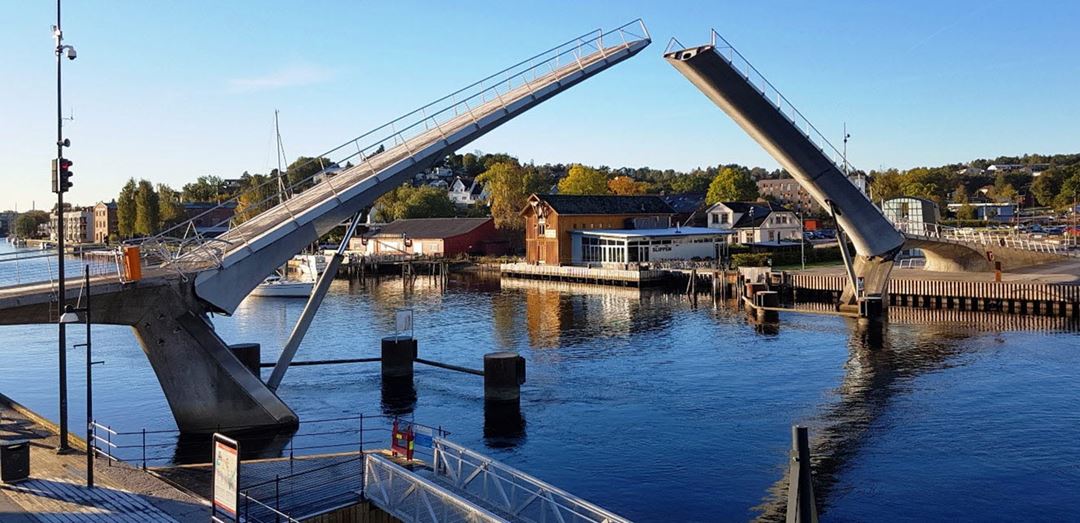It is a familiar scenario: An old concrete bridge with narrow pavements has to be widened to accommodate pedestrians and meet new standards. It then turns out that the bridge cannot support the weight of a wider concrete superstructure without further support, resulting in the costly reinforcement of bridge pillars or piers. In some cases, the result is a new pedestrian bridge built next to the existing one. Such expensive solutions may soon be history.
Under the direction of the EU, research communities from five different countries are now conducting materials research into enabling the production of extensions and other bridge elements made of fibre-reinforced plastic.
In Norway, such materials are widely used in everything from skis to vessel hulls. They are part of the family of materials known as composites – composite materials – consisting of fibreglass or carbon fibre surrounded by plastic. Such materials do not corrode or decay and thus require very little maintenance. They are also light and strong.
Coordinated from Norway, the recently- launched EU project DACOMAT aims to develop different types of plastic and fibre-based composites with a better ability to sustain damage than existing alternatives. The objective is to develop materials that are suitable for both bridges and wind turbine blades, for which there is an existing market for conventional composites.
The project is being coordinated by SINTEF. Participating companies from Norway include Polynt, FiReCo and DNV GL. The participants will work together to ensure that any development of fractures has minimal likelihood of compromising the strength of composite bridge elements and wind turbine blades. Specifically, the project is aiming to produce materials whose properties will make it even more difficult than in existing alternatives for fractures to propagate.
The objective is to develop composites that will give bridges a longer lifetime than conventional structures, while reducing lifespan costs by 30 per cent. In the case of wind turbine blades, the aim is a 30 per cent increase in lifespan and a 50 per cent reduction in costs.
To date, and despite the construction of a small number of bridges made of composite materials worldwide, the construction industry remains conservative. One aim of the DACOMAT project is to promote the acceptance of the use of composites in future bridge projects – and not only for the small-scale widening of pavements.
The project may pave the way for pedestrian and cycle bridges that are fully enclosed by composite structures, particularly in locations where the soil conditions inhibit the use of heavier structures.
Know-how acquired in the DACOMAT project may also provide opportunities for the use of composites in road bridges, or more precisely hybrid bridge structures in which some of the construction elements are made from composites and others from fibre-reinforced concrete.
One advantage is that composite elements can be prefabricated and transported to the construction site in one piece. Here, they may also function as formwork for the casting of concrete elements. This will save costs because concrete rigging makes up a significant part of the construction costs for concrete bridges. A number of hybrid bridges have already been built using this method.
The DACOMAT project focuses on the use of composite laminates, i.e. layered materials. Layer upon layer of fibre "mats" are placed on top of each other, in opposing directions. These "mats" are then embedded in a plastic material that binds the layers together.
The aim of the project is to tailor the desired material properties by controlling the chemical bonding between plastic and fibre, and by conducting research to determine the ideal process for "layered production".
To acquire more knowledge about material properties over time, the project is also aiming to develop technology that will enable the monitoring of fracture development using optical and acoustic sensors.
The project's findings will also be applicable to offshore installations and other structures that have to withstand harsh environmental conditions.
Norway has been at the forefront of this technology with its production of composite hulls for high-speed passenger craft. If the DACOMAT project is successful, different varieties of this material may become a familiar sight in new areas, both on land and offshore.
Jens Kjær Jørgensen is a Senior Research Scientist at SINTEF
Reidar Kvale Joki is a Principal Engineer at the consultancy firm FiReCo
This article was initially published in the Norwegian newspaper "Dagens Næringsliv". It is reproduced here with permission.

